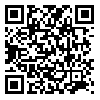Volume 68, Issue 2 (5 2010)
Tehran Univ Med J 2010, 68(2): 94-102 |
Back to browse issues page
Download citation:
BibTeX | RIS | EndNote | Medlars | ProCite | Reference Manager | RefWorks
Send citation to:



BibTeX | RIS | EndNote | Medlars | ProCite | Reference Manager | RefWorks
Send citation to:
I L, M G, K H, P V. Radilogic evaluation of pedicle lumbar and spinal canal dimensions in north-west of Iran using computed tomography. Tehran Univ Med J 2010; 68 (2) :94-102
URL: http://tumj.tums.ac.ir/article-1-370-en.html
URL: http://tumj.tums.ac.ir/article-1-370-en.html
1- , lotfiniai@yahoo.com
Abstract: (7441 Views)
Background: Pedicular screws are currently the gold standard of internal fixation of spinal column. Pedicular screws have their own complications, however the surgeon should be aware of morphometery of pedicles, as well as the anatomy of surrounding neural structures to minimize these risks. No national study has ever examined the physical characteristics of lumbar pedicles and this study is unique for this purpose.Methods: This study covers the patients undergoing lumbar spinal CT-scanning due to variable causes. 25 vertebrae were selected in either gender, 18 years or older and EFilm computer software was employed to measure different diameters of pedicle and the results were analyzed with p≤0.05 regarded as significant.Results: L5 pedicle was the widest (16.8 mm), while L1 was the narrowest (8.25 mm).this figure was 8.82, 10.48 and 12.86 mm for L2, L3, L4 respectively. Longitudinal depth of pedicle was 47.98, 48.68, 50.42, 48.32 and 47.8 mm for L1, L2, L3, L4, L5 respectively.Statistically significant differences were found between some dimensions detected in our study and similar studies.
Conclusions: The advantages of pedicular screws and rods to stabilize spinal column are well known. To avoid neurological complications, an understanding of anatomy and pedicle orientation is mandatory. The shape and diameters of pedicles are different base on races. Some differences were found in our study regarding pedicle dimensions.
Send email to the article author
| Rights and permissions | |
 |
This work is licensed under a Creative Commons Attribution-NonCommercial 4.0 International License. |





